Ladakh, the land of high passes, is a region in the state of Jammu & Kashmir that lies between the Kunlun mountain range in the north and the main Great Himalayas to the south.
It is one of the most sparsely populated regions in Jammu and Kashmir. It is a high altitude desert and one the most sparsely populated regions in India. The largest town in Ladakh is Leh. It is one of the few remaining abodes of Buddhism in South Asia; a majority of Ladakhis are Tibetan Buddhists.
Best time to Visit
June through October. September onwards is off season.
Best places to visit in Ladakh (Ladakh Taxi Rate List 2014-15)
Ladakh Map
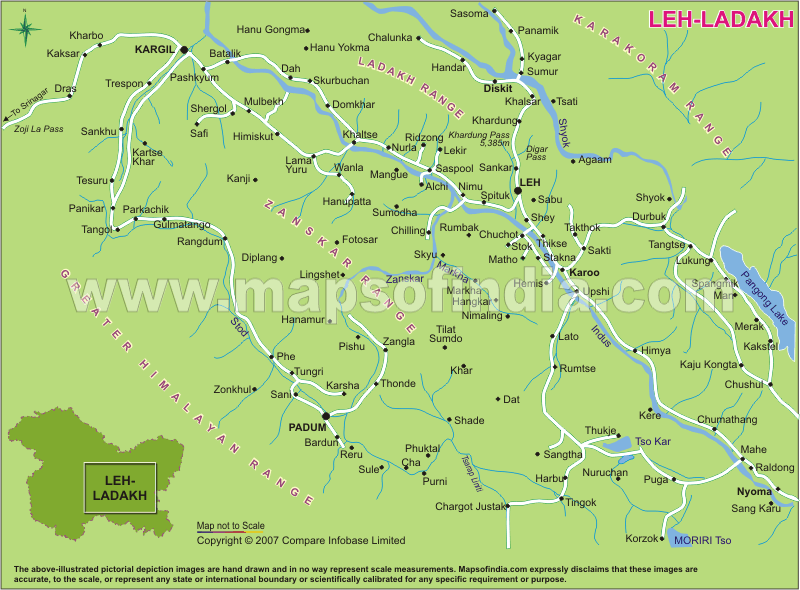
Leh
The former capital of the Himalayan kingdom of Ladakh, Leh was once an important stopover for traders travelling between India and China. The city is famous for its heritage villages, and the fort ruins. Things to see : Shanti Stupa, Leh Palace & Fort, Thiksey Monastery, Alchi, etc.
Leh Palace
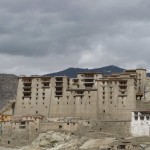
Leh Palace overlooks the Ladakhi Himalayan town of Leh is modelled on the Potala Palace in Lhasa, Tibet. The palace was built by King Sengge Namgyal in the 17th century. Leh Palace is nine storeys high; the upper floors accommodated the royal family, the stables and store rooms were in the lower floors. The palace, a ruin, is currently being restored by the Archaeological Survey of India. The palace is open to the public and the roof provides panoramic views of Leh and the surrounding areas.
Shey Monastery
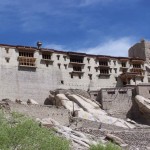
The Shey Monastery or Gompa and the Shey Palace complex are structures located on a hill in Shey,15 kilometres to the south of Leh in Ladakh, on the Leh-Manali road. The palace, mostly in ruins now, was built first in 1655, near Shey village, by the king of Ladakh, Deldan Namgyal, also known as Lhachen Palgyigon. It was used as a summer retreat by the kings of Ladakh.
The Drunk White Lotus School (http://www.dwls.org)
The Druk White Lotus School is located in Shey, Ladakh. The school was started at the request of the people of Ladakh who wanted a school that would help maintain their rich cultural traditions, based on Tibetan Buddhism, while equipping their children for a life in the 21st century. The masterplan and school buildings combine local building techniques and materials with leading edge environmental design to make them effective in the extreme climate. The school offers a broad education, initially in the Ladakhi language and English. Residential blocks allow children from Ladakh’s remote areas to attend, and a programme of sponsorship ensures that the poorest are not excluded.
Alchi
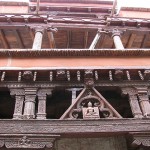
Alchi is a village and monastery in the Leh district of Ladakh region of Jammu and Kashmir, situated on the bank of Indus River, 70 km downstream from the capital in Leh. Unlike the other gompas in Ladakh, Alchi is situated on lowland, not on a hilltop. Alchi Monastery is known more as a monastic complex (chos-khor) of temples in Alchi village in the Leh District. The complex comprises four separate settlements in the Alchi village in the lower Ladakh region with monuments dated to different periods. Of these four hamlets, Alchi monastery is said to be the oldest and most famous.
Hemis Monastery
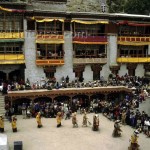
Hemis Monastery is a Tibetan Buddhist monastery (gompa) of the Drukpa Lineage, located in Hemis, Ladakh (within the Indian state of Jammu and Kashmir). Situated 45 km from Leh, the monastery was re-established in 1672 by the Ladakhi king Sengge Namgyal. The annual Hemis festival honoring Padmasambhava is held here in early June.
Lamayuru
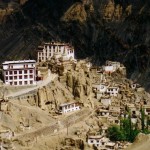
Lamayuru is a Tibetan Buddhist monastery in Kargil District, Western Ladakh, situated on the Srinagar – Kargil – Leh road, 15 km east of the Fotu La, at a height of 3,510 m. According to popular tradition, the Indian scholar Mahasiddhacarya Naropa allegedly caused a lake which filled the valley to dry up and founded Lamayuru Monastery.
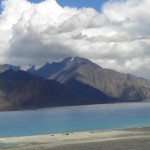
Pangong Tso, Tibetan for “long, narrow, enchanted lake”, is situated at a height of about 4,350 m (14,270 ft). It is 134 km long and extends from India to Tibet. 60% of the length of the lake lies in Tibet. During winter the lake freezes completely, despite being saline water. Here water sparkles in shades of blue, green, purple, and violet at different times during the day.
Tso Moriri
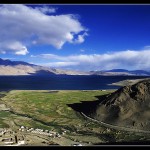
Tso Moriri is a beautiful lake in the Changthang area in Jammu and Kashmir. The lake is at an altitude of 4,595 m (15,075 ft); it is the largest of the high altitude lakes in the Trans-Himalayan biogeographic region, entirely within India. The lake sits between Ladakh, India to the North, Tibet to the east, and Zanskar in the west. The lake is fed by springs and snow-melt from mountains on the Changthang plateau. Water enters the lake in two major stream systems, one entering the lake from the north, the other from the southwest. Both stream systems create extensive marshes where they enter the lake. It formerly had an outlet to the south, but this has become blocked and the lake has become land locked. As a result, the water is now becoming saline. The lake has a wide and diverse fauna. From the black-necked cranes, Tibetan gazelle, Lynx, brown-headed gulls, bar-headed geese, snow leopards, and Tibetan wolf.
Tso Kar
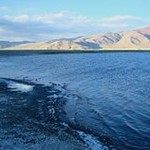
Close to Tso Moriri, Tso Kar is another lake in the periphery of the valley of Rupshu. The brackish lake is located off the road to Leh from Manali, and is fast becoming a tourist hub due to the variety of birds that visit the wetland. Yaks are common in the region.
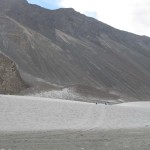
Initially named Ldumra or the valley of flowers, Nubra Valley is the second most popular tourist destination after Leh, in Ladakh. The valley can be accessed only through the Khardung La or tourists can transverse over Wari La from Sakti. The famous Siachen glacier lies to the north side of the valley and Nubra Valley is well connected with Xinjiang (China) through the Karakoram Pass. Famous places to visit include Hunder Sand Dunes, Diskit monastery and Panamik hot springs.
Zanskar Valley
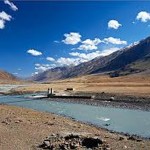
The Zanskar Range is a mountain range in the Indian state of Jammu and Kashmir that separates Zanskar from Ladakh. Geologically, the Zanskar Range is part of the Tethys Himalaya, an approximately 100-km-wide synclinorium formed by strongly folded and imbricated, weakly metamorphosed sedimentary series. The densely populated Zanskar valley is a part of the tri-armed valley system and is the most isolated of all the other Himalayan valleys. Nestled beautifully between two alpine lakes and snow-clad mountain peaks, Zanskar valley is the ideal trekking location in Ladakh. The Drang-Drung, a tributary of the Zanskar river, carries the largest glacier in Ladakh- the Drang-Drung glacier. The valley is open to tourists from April to August only. River rafting and trekking are quite popular at Zanskar.
We would love to plan a Happy Trip for you
Please call us on +919820976655/+919821232094 or email us at contact@simplyoffbeat.com

4 Replies to “Ladakh Travel Guide”
March 12, 2016
March 12, 2016
May 26, 2016
May 26, 2016